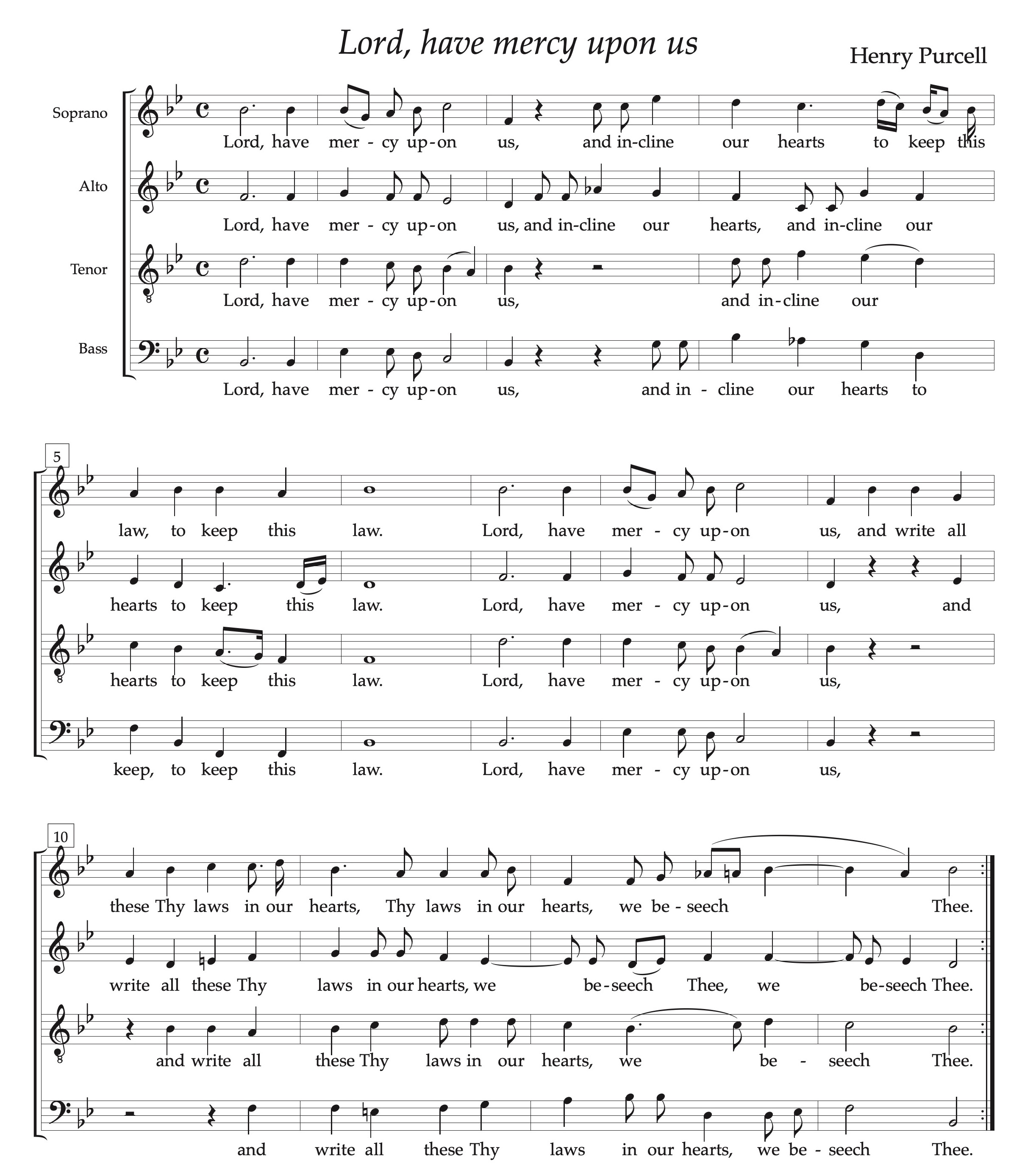LEARNING MORE ABOUT THE MUSIC WE SING
|
Lesson 8, for April 15
In Purcell’s Lord, have mercy upon us, we see that the first sentence asks the Lord “to incline our hearts to keep this law.” Another word for law is rule. In ecclesiastical use, a rule is a canon, approved by a council or pope. In music a canon is often a verbal instruction that explains how different performers are to read the same notated music and read it differently. Purcell doesn’t actually write a true canon at this point, but he evokes one, with first the altos, then the sopranos, then the basses, then the tenors singing essentially the same musical setting of the words in question. He uses the same technique again at “and write all these Thy laws in our hearts,” but with a different musical motif.
Purcell is famous for his amazing harmonies, where voices seem to collide with one another with intense dissonances that go on to resolve in unexpectedly beautiful cadences. This tiny anthem exhibits this feature in m. 2 and m. 8, where the first quarter-note has a D in the Tenor against E-flat in the Bass, a harmonic crunch on the word “mercy.” In m. 5, third quarter-note, the octave B-flats on the second-quarter note become B-flat against A-natural on the word “keep.” This is not word-painting but rather a way of emphasizing a particular word with a musical effect one would not normally expect.
The imitation between voices at “and write all these Thy laws in our hearts” mentioned above has an initial descent from the first note followed by a rising scale, peaking at the word “laws,” except in the Bass, where the scale ascends one more note on “in our,” a tiny climactic moment emphasizing where the laws are to be written, with the word “hearts” receiving even stronger emphasis by a sudden drop of a fourth in the Soprano and a sixth in the Bass.
Because by the late seventeenth century the sixteenth-century Anglican stricture against melismas was no longer stringently enforced, Purcell feels free to write ornamental figures in the Soprano voice at m. 4, in the Tenor and Alto voices in m. 5, and with one of his trademark crunchy cadences in m. 13.
End of Lesson 8. Click here to continue to Lesson 9, for April 20. Click here to return to the Lesson List.
|
|

